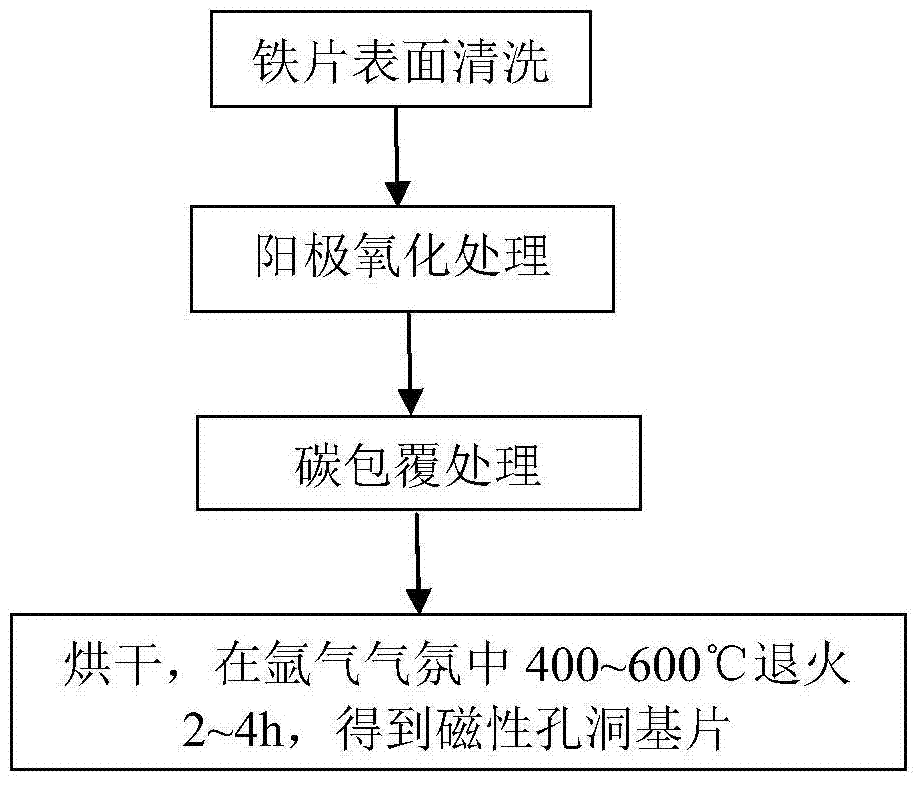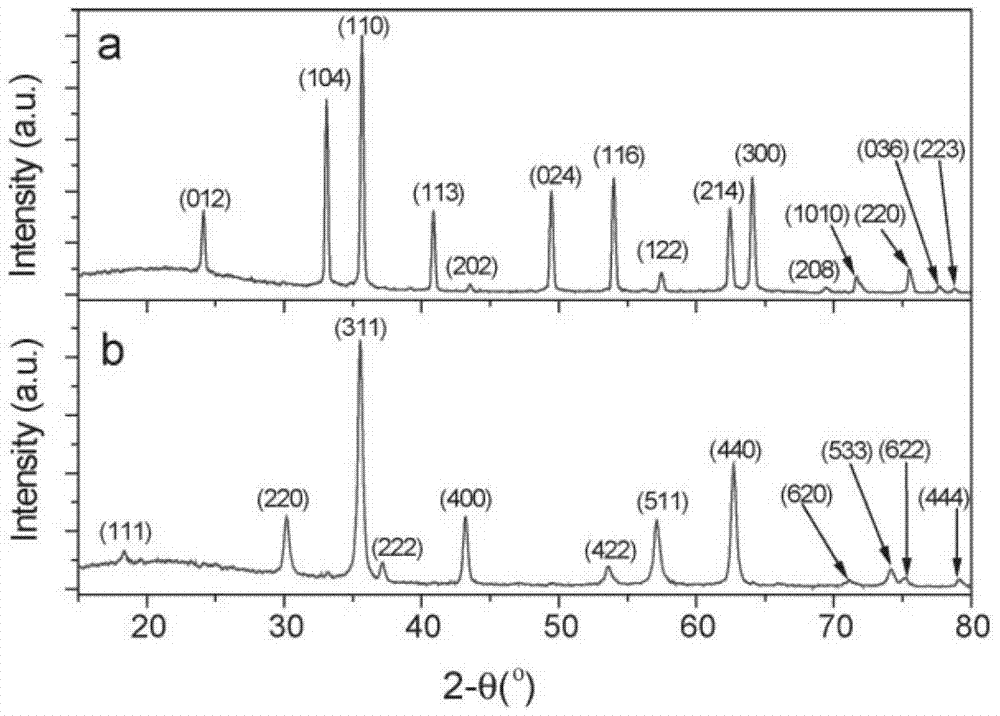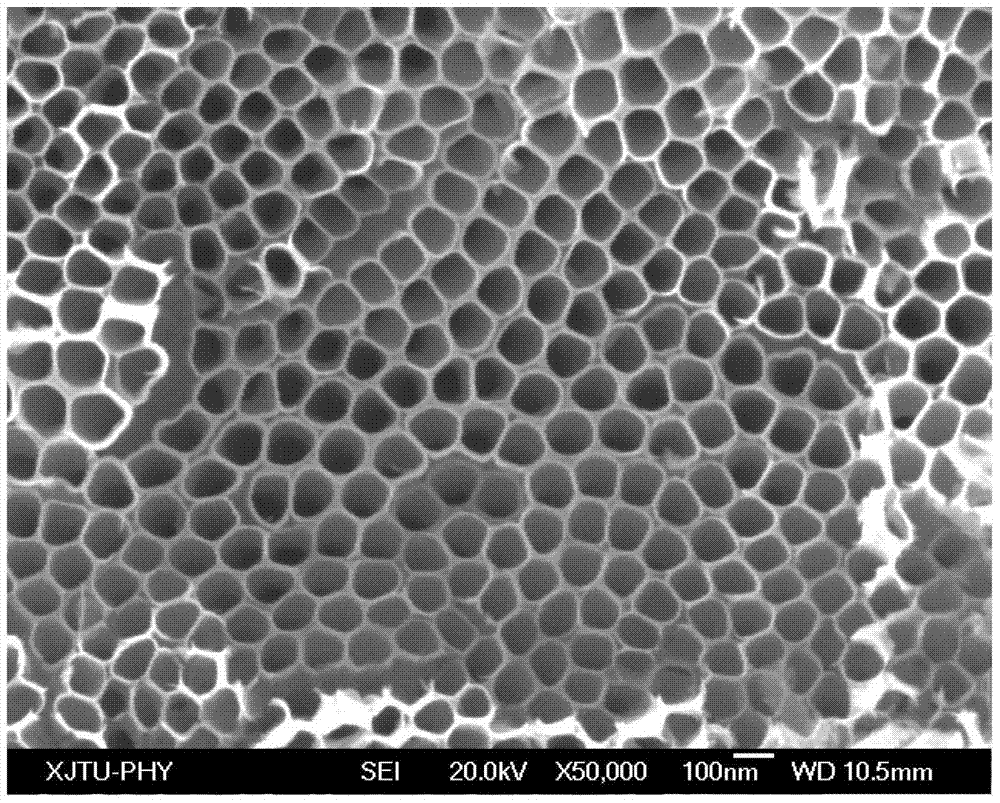A magnetic hole substrate for preparing sheet-shaped electromagnetic noise suppression material
A magnetic hole and electromagnetic noise technology, applied in the field of electronics, can solve the problems of reducing material permeability, limiting noise suppression performance, reducing ferromagnetic coupling, etc., to increase eddy current loss, improve electromagnetic noise suppression performance, and enhance magnetic The effect of conductivity
- Summary
- Abstract
- Description
- Claims
- Application Information
AI Technical Summary
Problems solved by technology
Method used
Image
Examples
preparation example Construction
[0020] A method for preparing a magnetic hole substrate for preparing a sheet-shaped electromagnetic noise suppression material, the process flow is as follows figure 1 As shown, it specifically includes the following steps:
[0021] Step 1: Ultrasonic cleaning of iron sheets with a thickness of 0.2mm and a purity of 99.9% in acetone, ethanol and deionized water for 10 minutes respectively, and dried naturally;
[0022] Step 2: The iron sheet cleaned in step 1 is anodized by a two-electrode method under constant voltage conditions, and holes are formed on the surface of the iron sheet to form amorphous ferric oxide; the electrolyte used in the anodic oxidation is: the purity is A mixture of 99.5% ethylene glycol solution, ammonium fluoride with a purity of 96% and deionized water with a resistivity greater than 18.2MΩ.cm; the preparation method of the electrolyte is: in ethylene glycol solution (99.5% purity) Add successively the ammonium fluoride (96% purity) that is equival...
Embodiment 1
[0027] A method for preparing a magnetic hole substrate for a sheet-shaped electromagnetic noise suppression material, specifically comprising the following steps:
[0028] Step 1: ultrasonically clean the iron sheet with a thickness of 0.2mm and a purity of 99.9% in acetone, absolute ethanol and deionized water for 10 minutes respectively, take it out and dry it naturally;
[0029]Step 2: In ethylene glycol (99.5% purity), sequentially add 0.5wt% ammonium fluoride (96% purity) equivalent to ethylene glycol mass and a resistivity greater than 18.2MΩ equivalent to 3wt% ethylene glycol mass .cm of deionized water, mixed evenly, to prepare an anodic oxidation electrolyte;
[0030] Step 3: Add 0.3 mol of glucose to 100 mL of ethanol aqueous solution (80 mL of deionized water mixed with 20 mL of ethanol) to prepare a carbon coating solution;
[0031] Step 4: The iron sheet cleaned in step 1 is anodized under constant voltage conditions using the two-electrode method: the iron shee...
Embodiment 2
[0038] The difference between this embodiment and embodiment 1 is that the oxidation voltage in step 4 is 30V, and the rest of the steps are the same as in embodiment 1.
[0039] After testing, the pore diameter of the holes on the surface of the magnetic hole substrate obtained in Example 2 is about 50 nm.
PUM
| Property | Measurement | Unit |
|---|---|---|
| diameter | aaaaa | aaaaa |
| absorption frequency | aaaaa | aaaaa |
| thickness | aaaaa | aaaaa |
Abstract
Description
Claims
Application Information
 Login to View More
Login to View More - R&D
- Intellectual Property
- Life Sciences
- Materials
- Tech Scout
- Unparalleled Data Quality
- Higher Quality Content
- 60% Fewer Hallucinations
Browse by: Latest US Patents, China's latest patents, Technical Efficacy Thesaurus, Application Domain, Technology Topic, Popular Technical Reports.
© 2025 PatSnap. All rights reserved.Legal|Privacy policy|Modern Slavery Act Transparency Statement|Sitemap|About US| Contact US: help@patsnap.com



